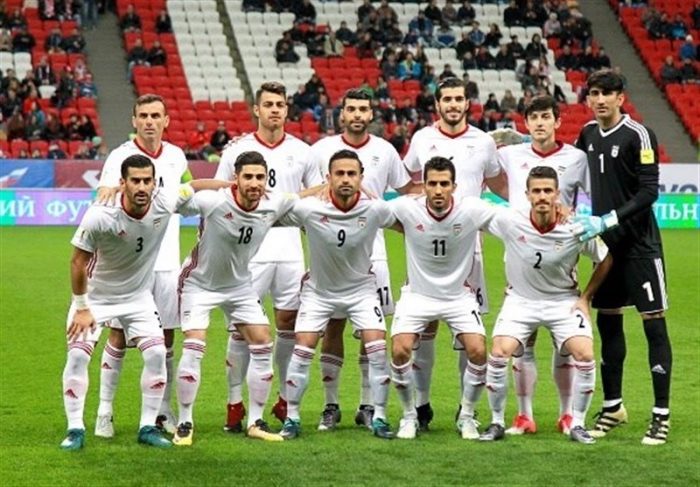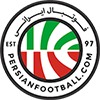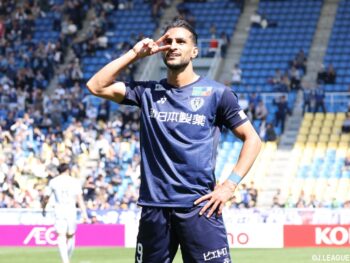Real Sport’s World Cup 2018: Iran Preview

Real Sport – LONDON, Although they were the second team to qualify for the competition, Carlos Queiroz’s side face an uphill test if they are to make it to the knock-out stage.
One of the first Asian countries to become FIFA-affiliated, joining in 1948, Iran boasts a long footballing pedigree.
That football is the national sport, eventually overtaking wrestling in the mid-twentieth century, is reflected in the fervour of the fans that the national team – known affectionately as Team Melli – represents.
Appearing in the tournament this summer in Russia, this is Iran’s fifth appearance in the tournament and their first appearance in consecutive finals, having made it to Brazil in 2014.
Of equal importance to the on-field performances will be the off-pitch issue of women’s rights for the country. With Iranian President Hassan Rouhani stating that women would be allowed to attend international matches after the arrest of 35 female spectators sparked international outrage, Russia 2018 could prove to be a watershed moment in the history of the country’s footballing heritage.
Ably managed for seven years by Carlos Queiroz, who is revered by many of the fans who, by now, tolerate his often idiosyncratic approach, Iran has undergone a golden period in their history during his tenure.
Blending together youth and experience, the Iran squad offers something of a smorgasbord when it comes to footballing ability. With high expectations, though, the fans are easily left disgruntled, meaning Queiroz has to balance tactical decisions with popular decisions.
The 65-year-old has not managed to avoid controversy entirely. Dropping Jalal Hosseini and Voria Ghafouri, two popular players from the two most popular Iranian teams, Persepolis and Esteghlal respectively, Queiroz cannot afford to make any mistakes in the group stages.
But with news of his imminent departure from Team Melli after the summer, the question on many Iranian’s lips is: What next?
Route to the finals
The Asian Football Confederation World Cup Qualifying format is one of the more complex formats from the various international confederations.
Consisting of four rounds, the first round sees the 12 lowest ranked teams play off in a bid to make the second round.
When the 12 teams have been whittled down to six, the second round sees them joined by the remaining 34 teams with all 40 teams divided into eight groups of five who play each other twice. The eight group winners advance into the third round where they are joined by the four best runners-up.
In a group with Oman, Turkmenistan, Guam and India, Iran comfortably topped the group, remaining unbeaten and only dropping four points in the ten games played.
This saw them progress to the third round in which 12 teams were divided into two groups of six, playing a further five games. The two top teams from each group went into the draw for the World Cup and the two best third-placed teams went into a play-off.
Going into Group A, Iran were joined by South Korea, Syria, Uzbekistan, China PR and Qatar. Once again, they comfortably topped the group, losing no games and drawing four times.
They were the first team in the AFC to guarantee qualification and only the second team to qualify after Brazil (Russia qualifying automatically as hosts).
Starting XI
The question as to who will start for Iran during the World Cup is one that, even now, has no easy answer. Carlos Queiroz is something of a tinkerer and has experimented with players in a number of different positions throughout qualifying and the international friendly period.
In goal, Queiroz continues to persist with Alireza Beiranvand despite the fact that he does have a tendency towards calamity.
In the full-back positions, Iran will likely field Milad Mohammadi, who has had an impressive season with Akhmat Grozny in the Russian Premier League, and Ramin Rezaeian, who has been less impressive with Oostende in Belgium.
The central defensive areas are somewhat more contested. Although Rouzbeh Cheshmi has been preferred by Queiroz, playing in both defensive and defensive midfield positions, he continues to disappoint, not least in the recent international friendly with Turkey in which he was at fault for both of the goals.
As a result, expect Iran to line up with the more experienced Pejman Montazeri alongside Morteza Pouraliganji.
Likely lining up in a 4-3-3, Iran will sit left-back-cum-defensive-midfielder Ehsan Hajsafi in front of the defense, screening them and offering a last line of defence behind the midfield two.
This two will consist of captain Masoud Shojaei and another play, most likely veteran Ashkan Dejagah who is returning to full fitness after a long-term knee injury. If Dejagah doesn’t start, Saeid Ezatolahi should be the preferred starter.
While there is no doubt Alireza Jahanbakhsh will be starting on the wide right position, the left side is more contested. Although Mehdi Taremi is the most likely to start, there will be lots of fans wanting to see Saman Ghoddos get game time, the youngster having impressed at FK Ostersunds this season.
Up front, Sardar Azmoun will get the nod ahead of Reza Ghoochannejhad who has not really kicked on after breaking onto the scene two seasons ago.
Key Player: Alireza Jahanbakhsh
In the last few seasons, Alireza Jahanbakhsh has undergone a meteoric rise, becoming a regular in the AZ Alkmaar side after signing in 2015.
Although he was not unimpressive in the first couple of campaigns, the most recent campaign was a break-out season for the young Iranian who became the first Asian to win the golden boot competition of a top European league.
His performances were enough to carry his side to the final of the KNVB Cup in the last two seasons, AZ losing to Vitesse both times.
If Jahanbakhsh has a good tournament, expect to see him gracing the football pitches of one of the big five European leagues before too long.
Group Stage
Finding themselves in a group with Portugal and Spain, Team Melli will be well aware of the near-impossibility of advancement in their group.
Of course, Portugal are always dark horses in the wrong sense of the word and so there is still a chance that either Iran or Morocco could sneak through somehow.
This means that Iran’s opening group stage game against Morocco on the 15th of June is their key fixture.
The winner of this match will be able to put pressure on Portugal and, given the fact that Iran face Portugal in the final group stage fixture on the 25th of June, the denouement of Group B could be one of the lesser-expected highlights of the tournament.
Prediction
It’s hard to see Iran progressing into the group stages and, even if they do, they will likely come across Uruguay as winners of Group A.
As a result, Team Melli’s opening game against Morocco is something of a final for the team.
Although their fans will not be happy to drop out of the tournament, they will also be hoping to pick up more than the one point they managed in Brazil in 2014, drawing 0-0 with Nigeria before losing to Argentina and Bosnia and Herzegovina.




